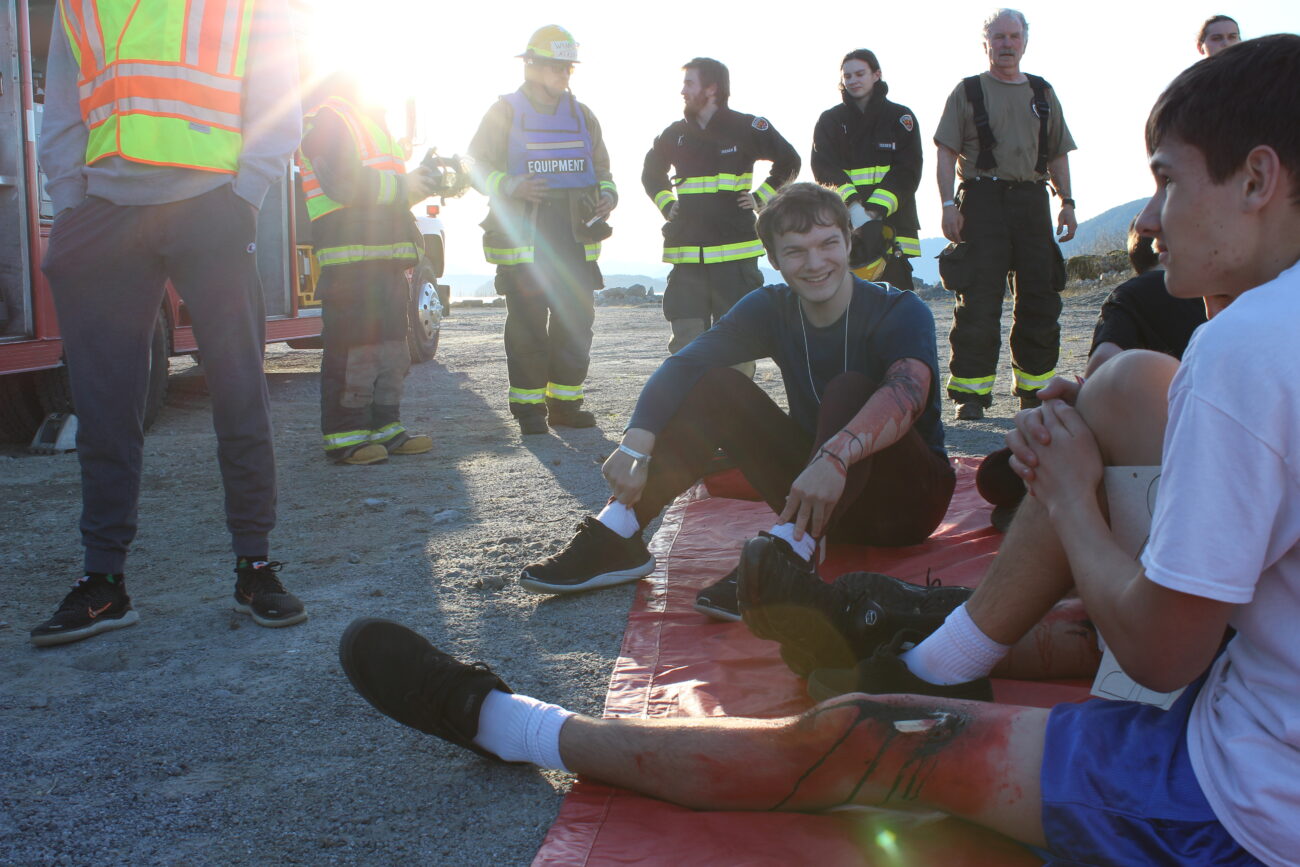
(Sage Smiley / KSTK)
Wrangell’s volunteer firefighters and state transportation officials held an airport disaster drill Wednesday (April 20) to prepare for the worst. Wrangell grade-schoolers and other community members pitched in as responders and volunteer victims for the drill, held once every three years.
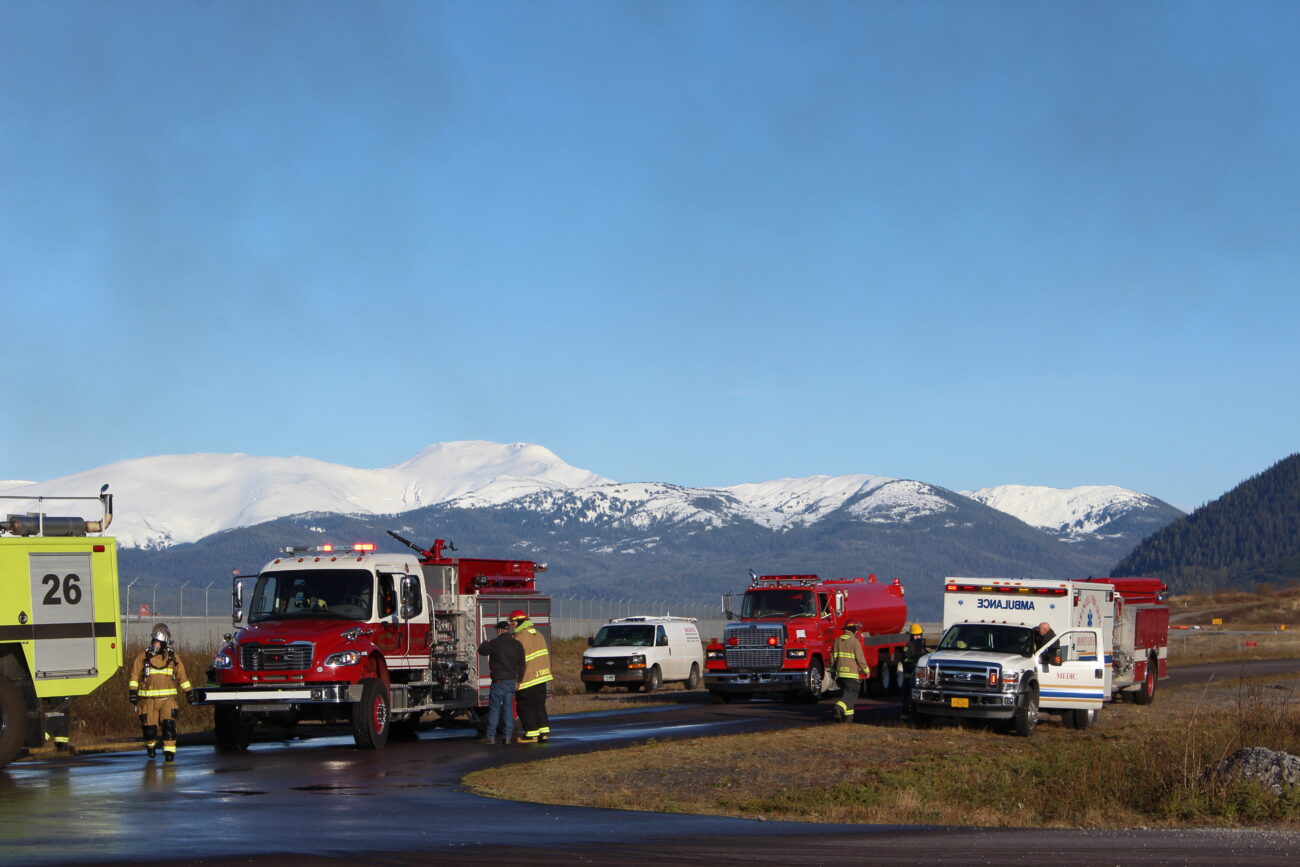
(Sage Smiley / KSTK)
Cries for help rang through the air as afternoon shadows lengthened along the gravel pit at the north end of Wrangell’s airport. Around 30 people – mostly Wrangell students – were scattered around the rocks, seemingly covered in bruises and blood.
Closer inspection, though, showed the bloody noses and head wounds were made with doctored chocolate syrup. The “bones” peeking out from ankles and thighs were actually scraps of wood, glued in place and doused in syrupy fake blood. And all the volunteers had beige cards strung around their necks with their ailments written out: Head laceration. Contusions. Disoriented. Resp rate 28.
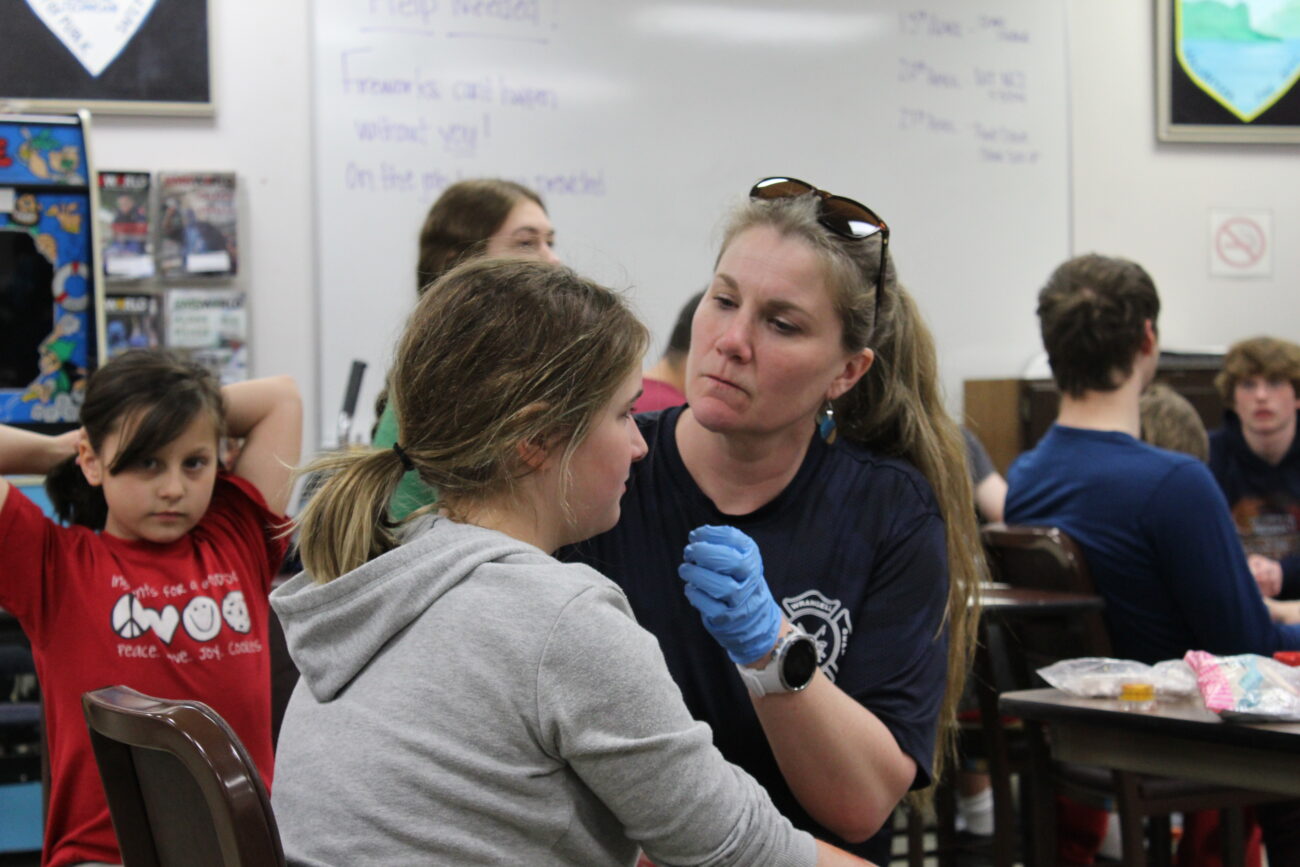
(Sage Smiley / KSTK)
Black and yellow-suited members of Wrangell’s volunteer fire department spread across the pit, carrying wrist tags that will help sort victims into priority groups. Victims in the direst circumstances on the red tarp. Less pressing cases on the yellow. Least worrisome on the green.
All these people – the students and fire volunteers, along with Wrangell’s police chief and state Department of Transportation officials – were taking part in a once-every-three-years disaster drill, a simulated plane crash.
Fire Captain Dorianne Sprehe says the drill is meant to test Wrangell’s emergency responders. State transportation officials can’t respond to most crises by themselves – there are only four of them. So they’ve got to call up Wrangell’s volunteer firefighters for mutual aid.
During the drill, responders deployed a rescue raft, to get a sense of how they look and operate. Then, DOT’s yellow-green fire truck turned its hoses on a junk truck full of flaming wooden palettes. Wrangell’s fire department brought out its water tanker truck, and volunteers manned another hose from the side of the state’s truck.
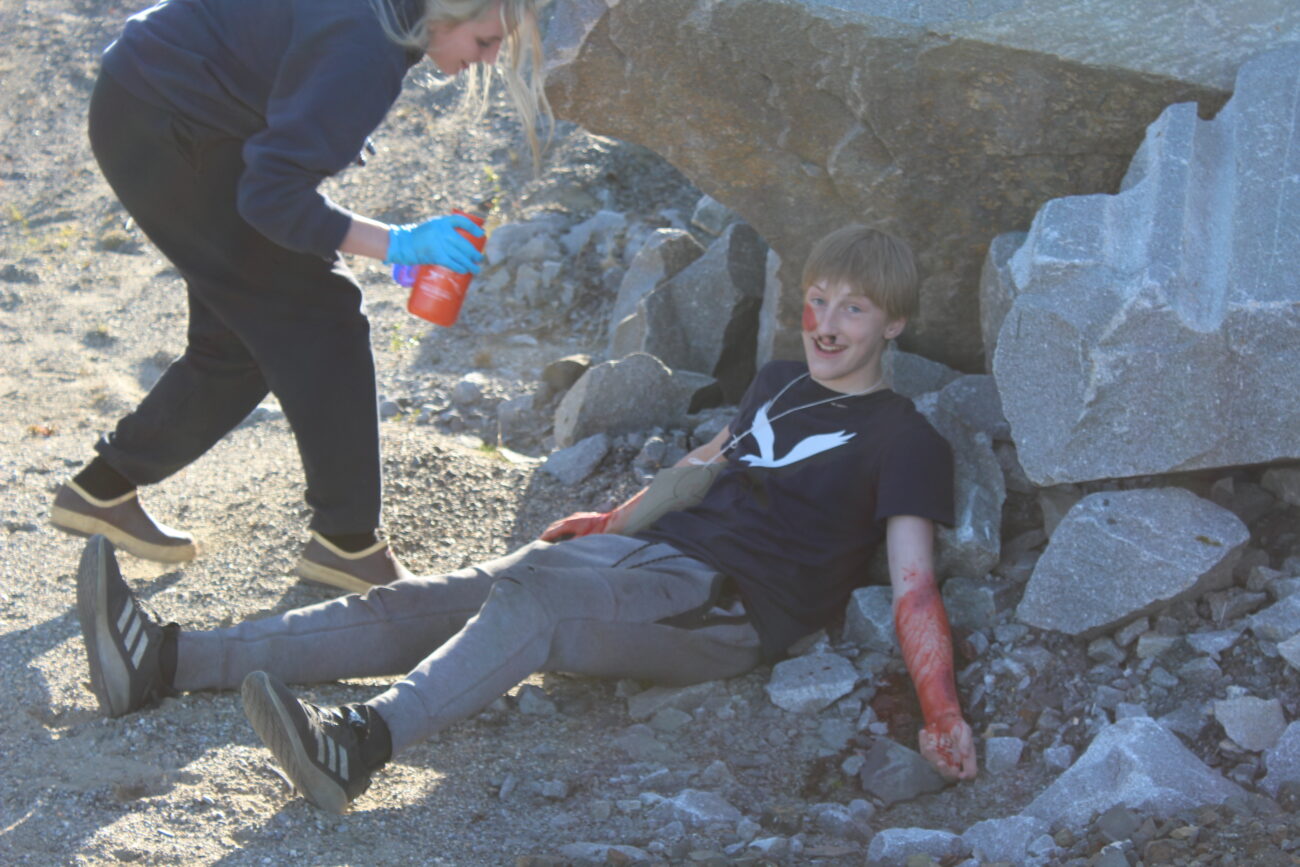
(Sage Smiley / KSTK)
Sprehe says the event helps the firefighters practice triage, treatment and transport on volunteer victims.
“Generally in the past, we have participated and brought [the victims] up to the hospital,” Sprehe says, but: “This year, SEARHC has its own drill planned in June. So we did just part of it. We just did the fire suppression and the simulation for triage, and we didn’t transport anybody to the hospital, which I know some of our victims were very disappointed with, but we’ll get that in June.”
Sprehe says the practice also is a great test of where the Wrangell volunteers stand, as a department.
“It shows us our vulnerabilities but also our capabilities,” she says, “So we have some highlighted things to work on going forward. But overall, we did a great job. The fire is out and all of our victims are accounted for, and that’s what we want.”
As for what the Wrangell volunteer firefighters will be working on, Sprehe says the main focus will probably be plain old practice.
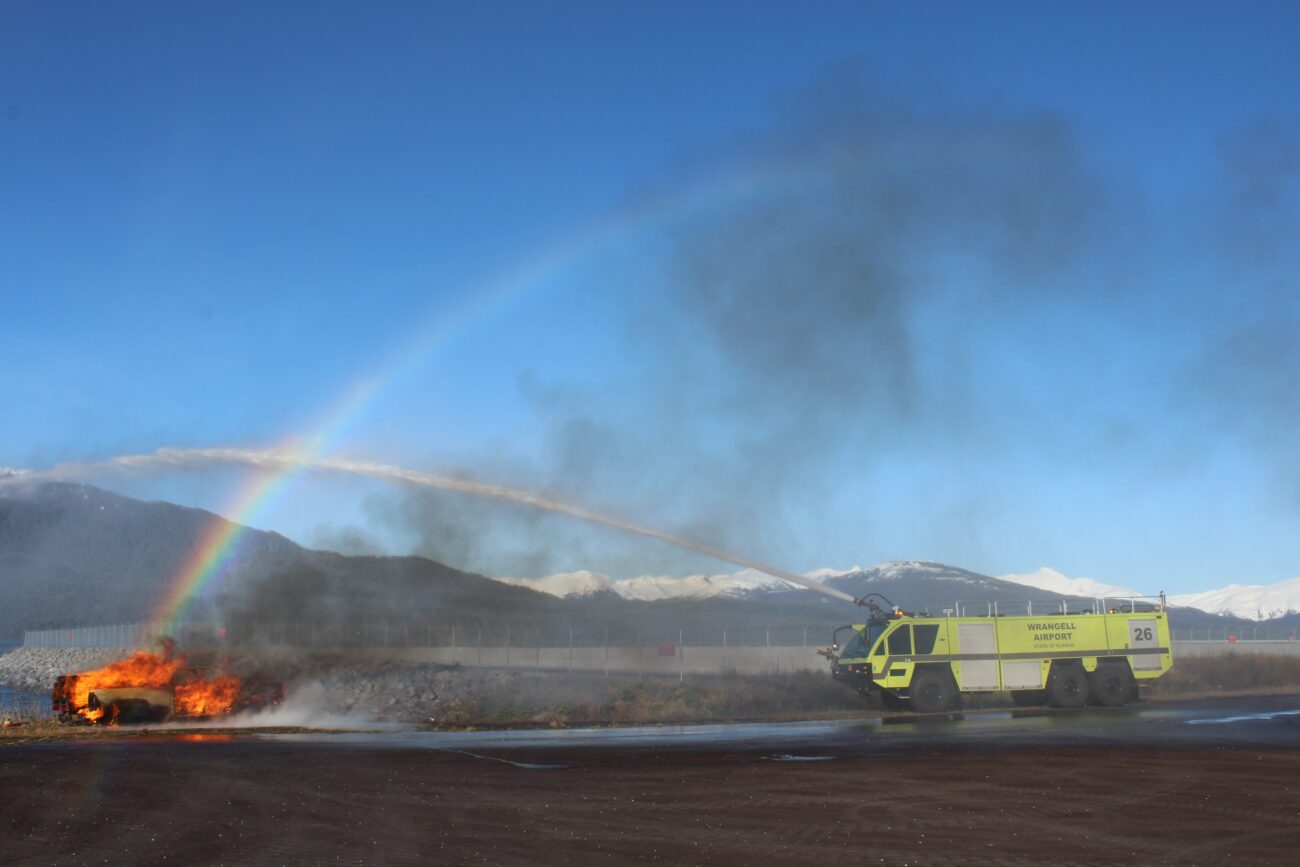
(Sage Smiley / KSTK)
“We have seven new members in the department, and COVID kind of put a hold on all of our training,” Sprehe explains. “So for some of these for newer members, or our brand new members, just getting a hose line in their hand – That feel is not something you have every day, and so making sure that they’re comfortable with that, that’s going to be, number one, I think, and that’s on our meeting schedule for next week. So we’ll start there.”
Back at the fire hall, still sporting fake blood and gore, students lined up for hamburgers and hot dogs. Sprehe manned the door to a freezer full of ice cream bars, and supervised kids using baby oil to try and scrub off makeup and fake blood.
“I had a lot of big cuts and stuff. A few bruises. It was fun,” said third-grader Aria Danowski, holding a burger and gesturing to her face, still covered in fake blood. She said she liked being a victim, except when her foot got caught in some of the boulders.
During the simulation, fifth-grader AJ Roundtree said she and Aria pretended they were sisters, alone in the crash except for each other.
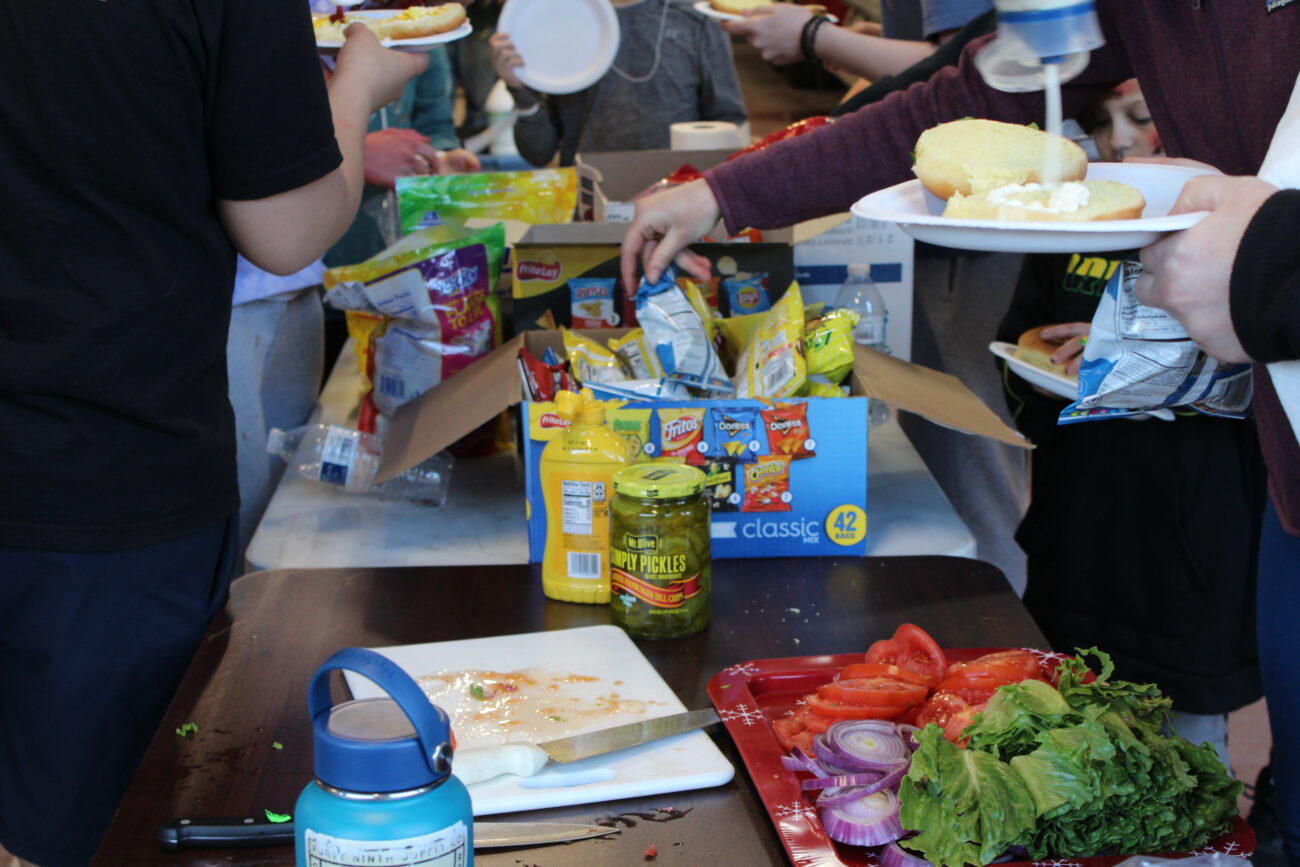
(Sage Smiley / KSTK)
“It was funny because I’m best friends with her actual sister,” Roundtree said, and added with a laugh that the hardest part was waiting to be triaged: “We had to pee for the longest time.”
Sprehe says she’s grateful to the community for coming out to volunteer on short notice.
“I just want to really put a big thank you out there to everyone,” she said the day after the drill. “It was last minute that we put out the request for volunteers and [the response] was overwhelming.”
And, she says she’s glad responders were able to make it through the drill without being called out on a real emergency.
4/22: This article has been updated with additional photos.
Get in touch with KSTK at news@kstk.org or (907) 874-2345.
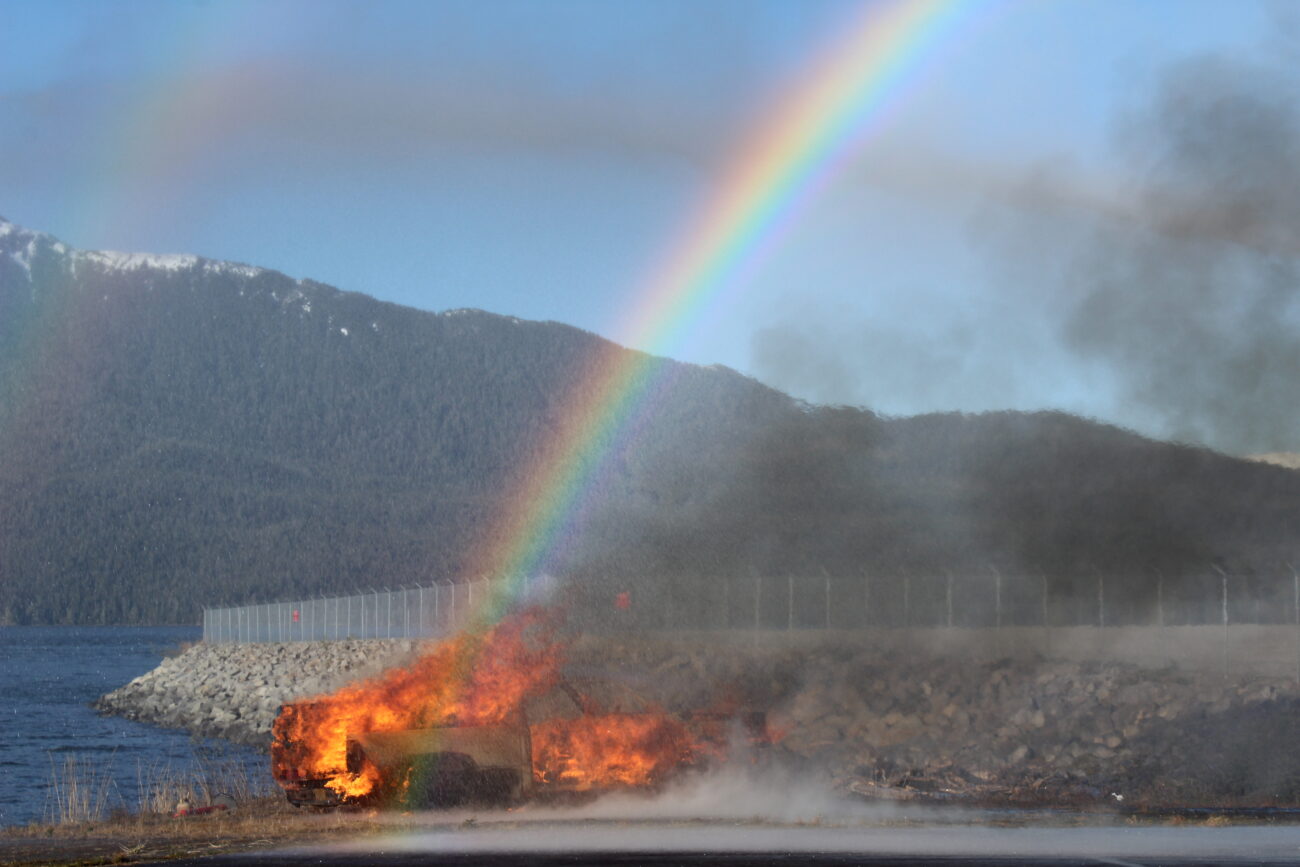
(Sage Smiley / KSTK)












